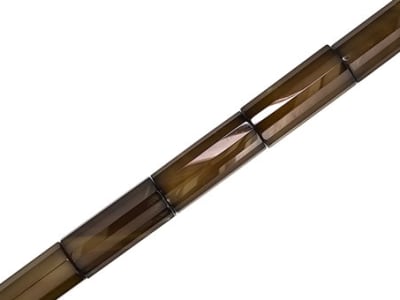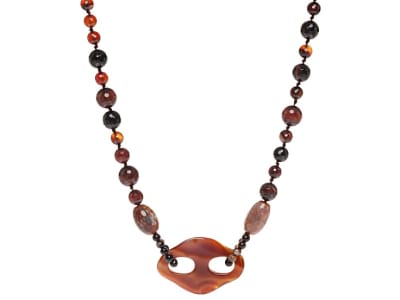Sard is a translucent chalcedony that is brown to dark reddish-brown. It is formed from the deposition of silica at low temperatures from silica-rich waters percolating through cracks and fissures in other rocks. Sard is darker and browner in tone than carnelian. The brown color is thought to come from iron impurities and the color might be lightened by heat treatment. Pliny the Elder reported that the stone came from the Persian city of Sardis or Sardes which is now known as the modern city of Sart, Turkey. The stone could also get its name from the Persian word sered which translates to yellowish red. Sard is often used for signet rings and decorative materials.
General Information
LWUV: Inert
Sard Colors
-
 Brown
Brown -
 Red
Red
Countries of Origin
Mongolia; Russian Federation; Unknown; United States of America; Brazil; Germany; India
History
Sard has been mined since the Bronze Age. Stones mined in India were used in the inlay decoration called parchin kari in the Taj Mahal. It was thought to have been used to ward off enchantments and spells. Cabochons have been found in the Cheapside Hoard in Great Britain. The red brown stones from the Caucasus Mountains were used by Fabergé to create figurines for the Russian Imperial court.
Care
Normal care
More About Sard
In ancient Egypt Sard was thought to protect against evil spirits. In India it was used to protect against sorcery. The Prophet Mohammad mentioned that sard would produce prosperity and bring happiness.

